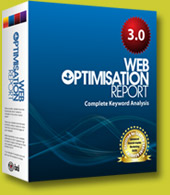Website Design Performance
There are a few Web site design guidelines that every Web site should incorporate in order to attract more traffic to their site, poorly designed sites instantly lose traffic and reduce functionality for potential visitors.
Web Site Design Guidelines for a Search-Friendly Site
To have a site optimized for search engines you must remember that you're not only designing to appeal to your visitors, but also to the search engine spiders. There are a few principles to keep in mind while designing your site to be search engine friendly. These are just very basic principles.Make your text readable.
Busy backgrounds that overshadow the text are not only hard to read but can make your site look unprofessional. Make your text readable: standard size (Web standard is 12), no silly fonts that have to be painstakingly interpreted, and make sure whatever font color you pick is readable as well (black is the preferred text colour). If a search engine deems your text colour to be too similiar to your background colour it may penalise your site as spam.Make your navigation clear.
"Page not found" errors should be strictly avoided, this error not only deters search engines from going through your website but also makes navigation difficult for visitors. This can be avoided by making your site hierarchy clear and consistent. Make sure that your navigation tools are obvious. You'll also want to include a site map or index page for any site that's got more than 10 pages, which eases visitors ability to find what they want.Images
Every image on your site should be there for a good reason. Make images accessible for those searchers who might have their images turned off due to slow download times and give every image an "alt" label and a corresponding text link.Flash use
While Flash is a great tool it tends to increase download time and it not search engine friendly, text can't be read and search engine spiders can't navigate through a flash menu.Search Engine Friendly Site Design is User Friendly too
The bottom line in designing your site for search engine spiders is to remember that you need to keep the user in mind as well. It's a tricky balance, designing for computer programs AND searchers, but if you keep these general principles in mind you'll have a good start.Search engine spiders and users are looking for:
- Content
- Keywords
- Correct Design
Search engine spiders can't easily navigate a poorly designed site.
Search engines feed on keywords, that is what powers search engine listings
Users use keywords, and if you've optimized your site, they'll find you.
Verify these features are present on your website with the
Website Promotion Tool!
IMPROVE YOUR WEBSITES PERFORMANCE TODAY
Search Engine Optimization
Search Engine Marketing
Website Optimization
Keyword Density
Website Design Performance

